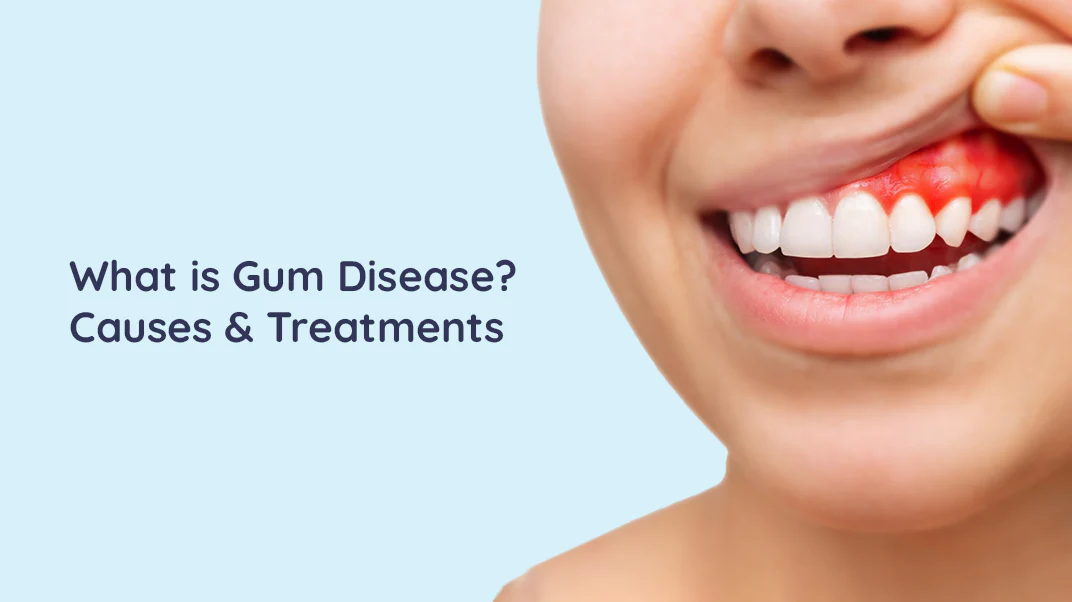Introduction
Gum disease, or periodontal disease, is a prevalent oral condition that occurs in the gums and supporting structures of the teeth. It starts with mild inflammation (gingivitis) and can advance to serious infections (periodontitis) if not treated. Knowing the causes, prevention strategies, and treatment is essential for having healthy gums and avoiding tooth loss.
Causes of Gum Disease
Gum disease occurs as a result of a number of factors, including:
Poor Oral Hygiene: Failure to brush and floss properly enables plaque to build up, causing gum inflammation.
Buildup of Plaque and Tartar: When plaque hardens to form tartar, it causes irritation of the gums and infection.
Smoking and Use of Tobacco: Tobacco lowers the resistance of the immune system, making it difficult for gums to combat infection.
Genetics: Certain people have a predisposition to gum disease based on genes.
Hormonal Changes: Menstruation, pregnancy, and menopause make gums more susceptible to disease and more sensitive.
Diabetes: Increased blood sugar levels put people at greater risk of gum infection by impairing the body’s ability to heal.
Poor Nutrition: Inadequate diet that is deficient in important nutrients, especially vitamin C, may cause inflammation of the gums.
Medications: Some medications decrease saliva flow, resulting in dry mouth and an increased risk of gum disease.
Prevention of Gum Disease
Prevention of gum disease involves habitual oral hygiene and healthy practices. Key steps include:
Daily Brushing and Flossing: Brushing the teeth twice daily with fluoride toothpaste and daily flossing to eliminate plaque.
Antibacterial Mouthwash: Rinsing with an antibacterial mouthwash reduces the bacteria and deposition of plaque.
Quit Smoking: Tobacco avoidance has a significant decreased risk of developing gum disease, as well as better oral hygiene.
Balanced Diet: Taking nutrient-dense foods makes the gums stronger and enhances the immunity system.
Regular Dental Visits: Professional cleanings and checkups assist in detecting and treating gum disease in its early stages.
Manage Chronic Conditions: Managing diabetes and other conditions lowers the risk of gum-related complications.
Stay Hydrated: Water intake aids in flushing food particles and bacteria out of the mouth.
Symptoms of Gum Disease
The symptoms of gum disease depend on the severity. The most common signs are:
Red, swollen, or sore gums
Bleeding gums when brushing or flossing
Bad breath that lingers
Receding gums
Loose or drifting teeth
Development of deep pockets between the gums and teeth
Treatment Options for Gum Disease
Treatment of gum disease is based on its stage:
Professional Cleaning: Scaling and root planing eliminate plaque and tartar deposits below the gumline.
Medications: Oral antibiotics or antibiotic gels manage infection and inflammation.
Surgical Procedures: Severe cases might need flap surgery or tissue grafting to promote gum health.
Laser Therapy: Certain dentists employ laser therapy to kill the infected tissue and encourage healing.
Better Oral Hygiene Habits: Having good oral hygiene can avoid a relapse of gum disease.
Gum disease is a preventable but dangerous condition that may affect overall health if left undetected in the early stages. Through regular oral hygiene, a healthy diet, and periodic dental check-ups, one can ensure strong, disease-free gums. Early diagnosis and prompt treatment are essential in maintaining oral health and avoiding complications.









